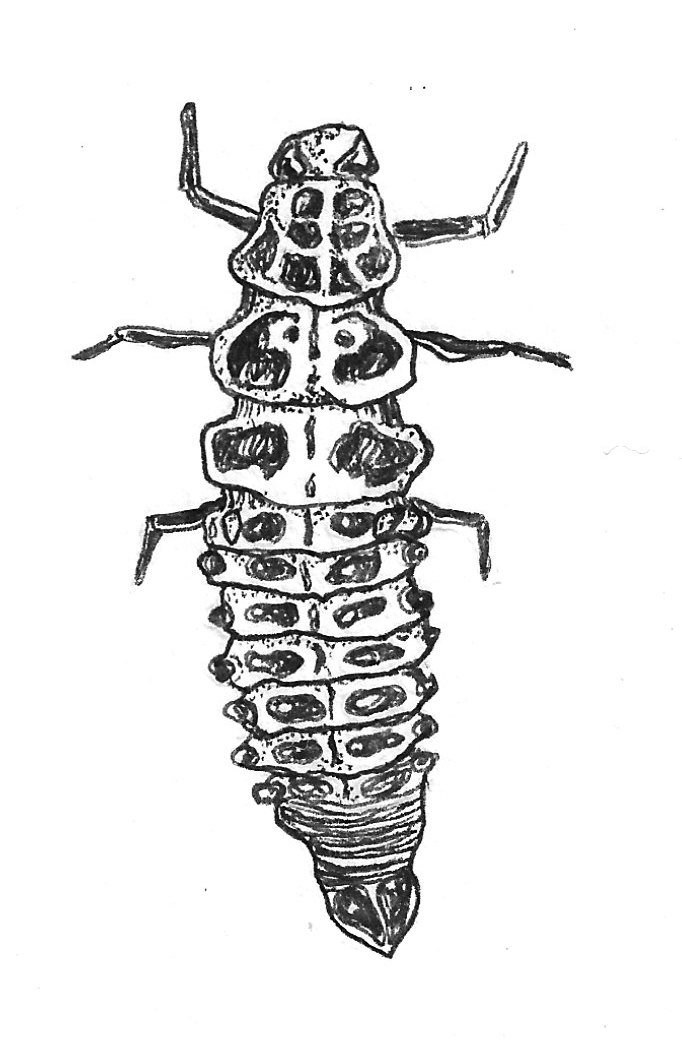Plants of the year 5850
Speculative flora of the Sybiocene
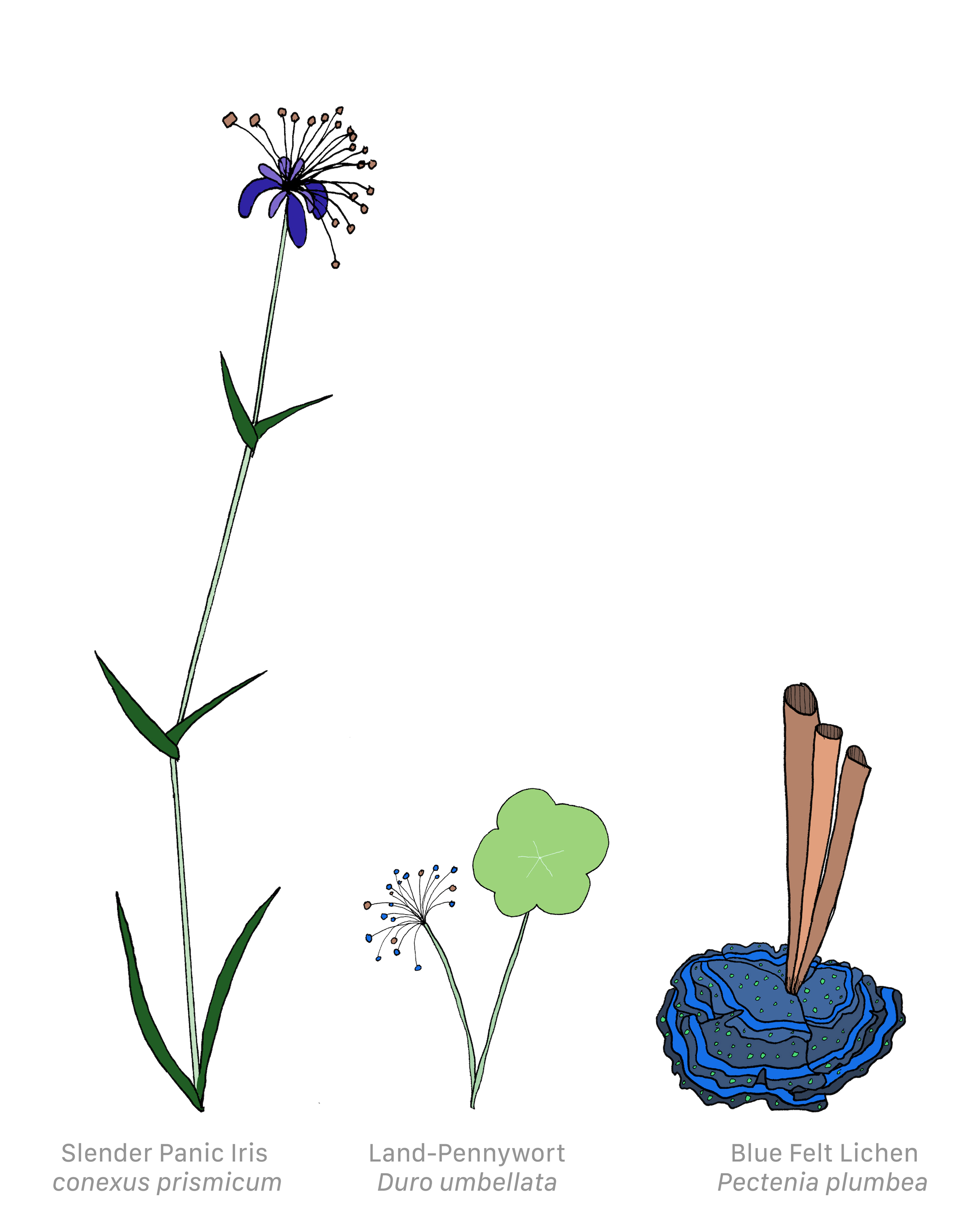
What plant species are being actively protected by control and what suffers neglect?
How can a humble and mutualistic relationship with nature be formed?
And, can we learn from potential evolutionary strategies concerned with survival after a climate catastrophe?
These are some of the questions at the heart of B Mosher’s Plants of the Year 5850.
“ When people speculate about the future, we often place humans at the centre of our imaginings. By centring on the endeavours of our species, it is difficult to see beyond ourselves. With Plants of the Year 5850, I am playing the part of speculative evolutionary botanist, dreaming about what potential adaptive and evolutionary tactics may benefit endangered plants found in my local area of Mi’kma’ki. Each of these plant sculptures act out snippets of my invented evolutionary narratives.
The tallest of the three, Slender Panic-Iris, conexus prismicum represents an evolutionary hybridization of two plants, Iris prismatica Slender Iris and Panicum dichotomiflorum Panic Grass. Both of these endangered plants are being threatened due to habitat loss. During the intervening millennia, I imagine them resisting anthropological neglect by joining together for survival.
The shortest sculpture, Land-Pennywort, Duro umbellata, depicts the water-dwelling Pennywort, Hydrocotyle umbellata after tenaciously adapting to life on land. The endangered Hydrocotyle umbellata lives on the edges of lakes in Kejimkujik National Park. As lake contours shift and eventually flood with ocean water, the Pennywort may adopt sturdier stalks to escape by acclimating to growing on dry land.
Another plant finding new potential footholds is our provincial lichen Blue Felt Lichen or Pectenia plumbea. Their invisible underground mycelia have discovered methods to break down soil contaminants to give the rest of the lichen strength. This strength enables their base of overlapping scales called squamulose to retain water. This storage capacity allows them to engorge with rainwater for the long dry periods. Now the Blue Felt Lichen can grow inflated bases and striking tall, slender fruiting bodies. These fruits take on the hue of copper found in the soil from agricultural pesticides.
Annapolis Royal as a site has a rich history of mastery over the natural world. The sublime beauty of the historic gardens on George Street demonstrates a domineering relationship between the keen controlling eye and the perpetual wildness of plants. Beyond Victorian elegance inflicted on plants, Annapolis Royal residents of the early 20th Century carefully crafted patents for controlling pests and preserving crops. Of the four patents granted to residents of Annapolis Royal, three are concerning the preservation of crops by poisoning insects and fungi with harmful chemicals or copper-based pesticides (copper-sulphide). ”
The tallest of the three, Slender Panic-Iris, conexus prismicum represents an evolutionary hybridization of two plants, Iris prismatica Slender Iris and Panicum dichotomiflorum Panic Grass. Both of these endangered plants are being threatened due to habitat loss. During the intervening millennia, I imagine them resisting anthropological neglect by joining together for survival.
The shortest sculpture, Land-Pennywort, Duro umbellata, depicts the water-dwelling Pennywort, Hydrocotyle umbellata after tenaciously adapting to life on land. The endangered Hydrocotyle umbellata lives on the edges of lakes in Kejimkujik National Park. As lake contours shift and eventually flood with ocean water, the Pennywort may adopt sturdier stalks to escape by acclimating to growing on dry land.
Another plant finding new potential footholds is our provincial lichen Blue Felt Lichen or Pectenia plumbea. Their invisible underground mycelia have discovered methods to break down soil contaminants to give the rest of the lichen strength. This strength enables their base of overlapping scales called squamulose to retain water. This storage capacity allows them to engorge with rainwater for the long dry periods. Now the Blue Felt Lichen can grow inflated bases and striking tall, slender fruiting bodies. These fruits take on the hue of copper found in the soil from agricultural pesticides.
Annapolis Royal as a site has a rich history of mastery over the natural world. The sublime beauty of the historic gardens on George Street demonstrates a domineering relationship between the keen controlling eye and the perpetual wildness of plants. Beyond Victorian elegance inflicted on plants, Annapolis Royal residents of the early 20th Century carefully crafted patents for controlling pests and preserving crops. Of the four patents granted to residents of Annapolis Royal, three are concerning the preservation of crops by poisoning insects and fungi with harmful chemicals or copper-based pesticides (copper-sulphide). ”
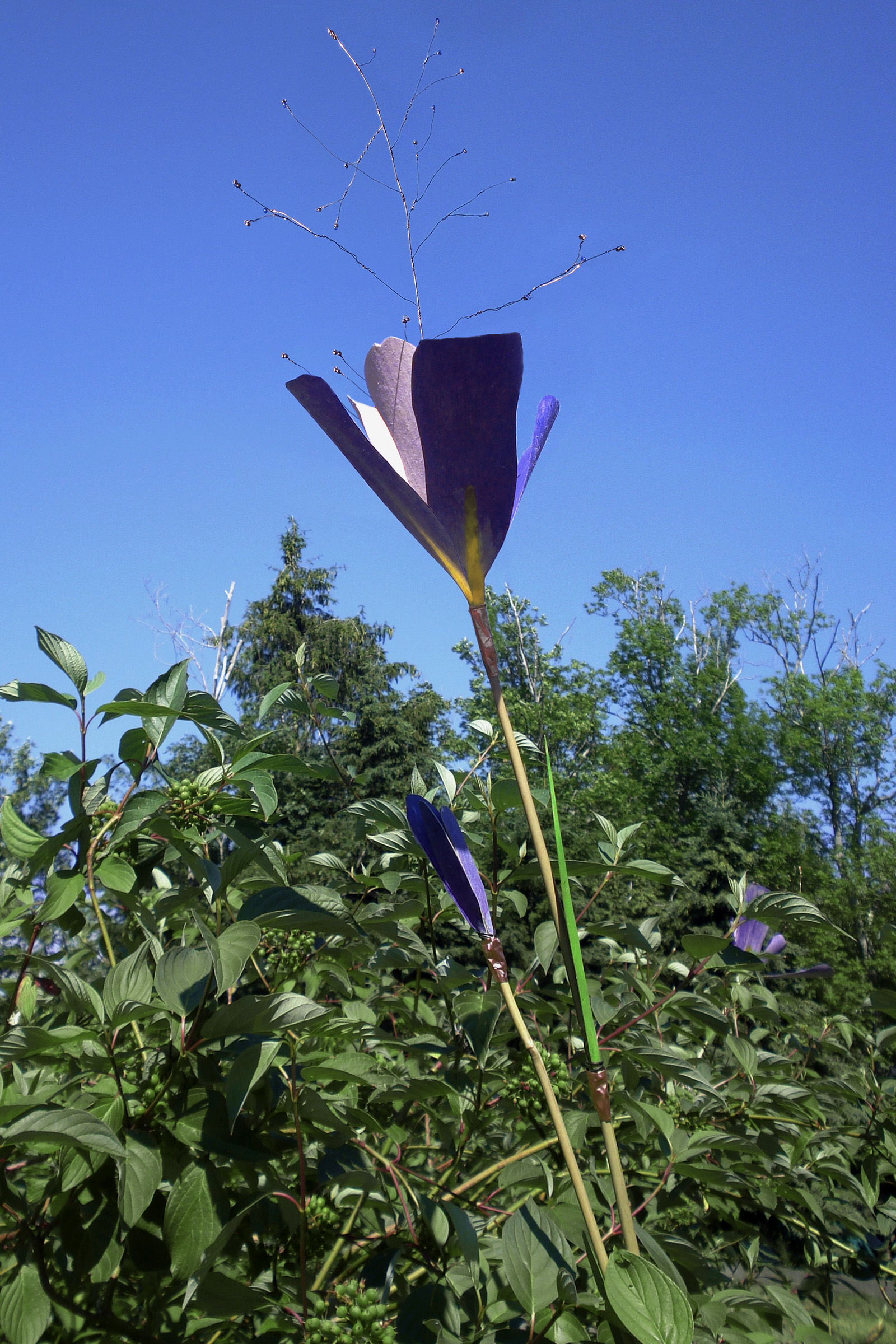
Slender Panic Iris,
Conexus prismicum
Conexus prismicum
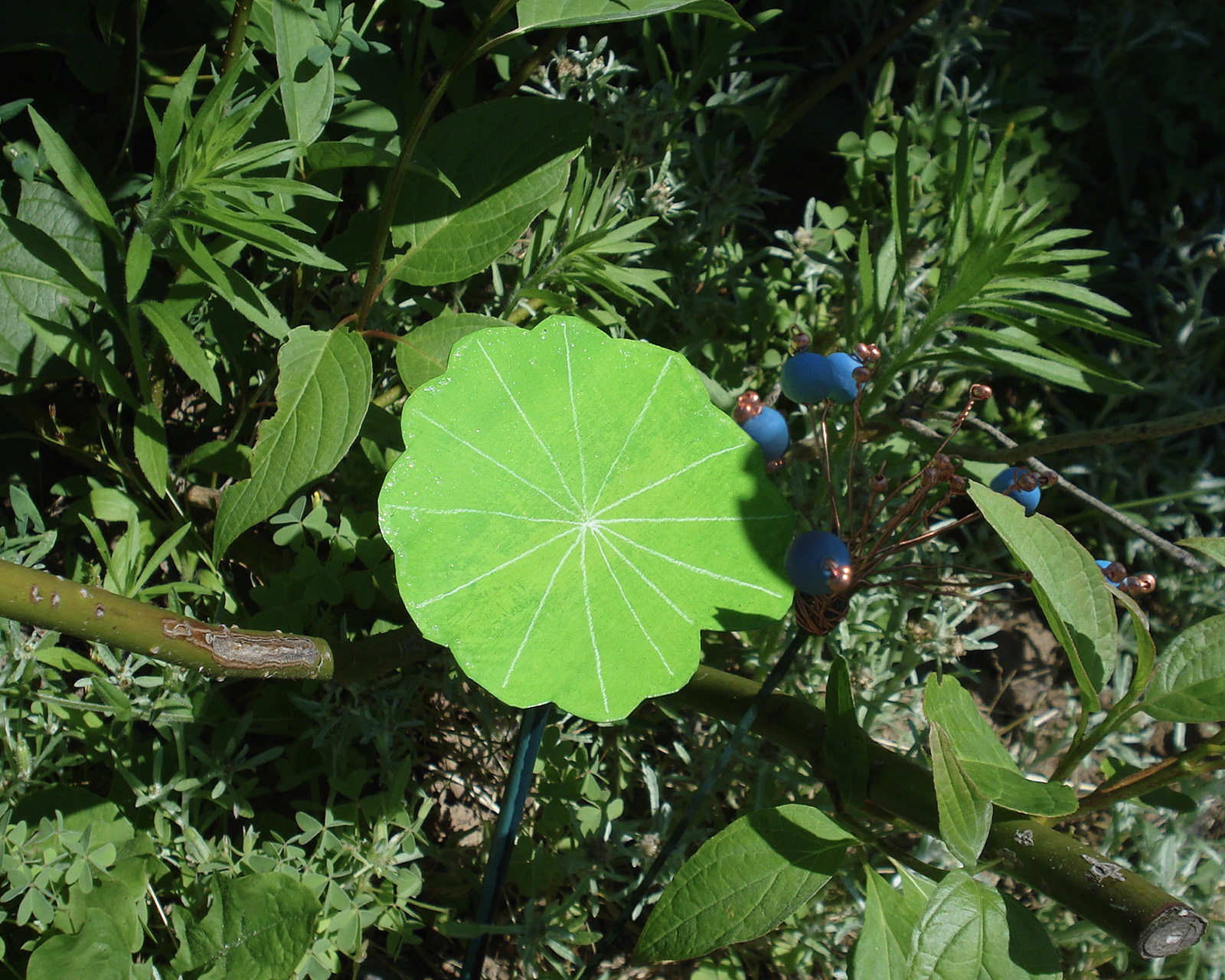
Land-Pennywort,
Duro umbellata

Blue Felt Lichen,
Pectenia plumbea
Humid Landscapes
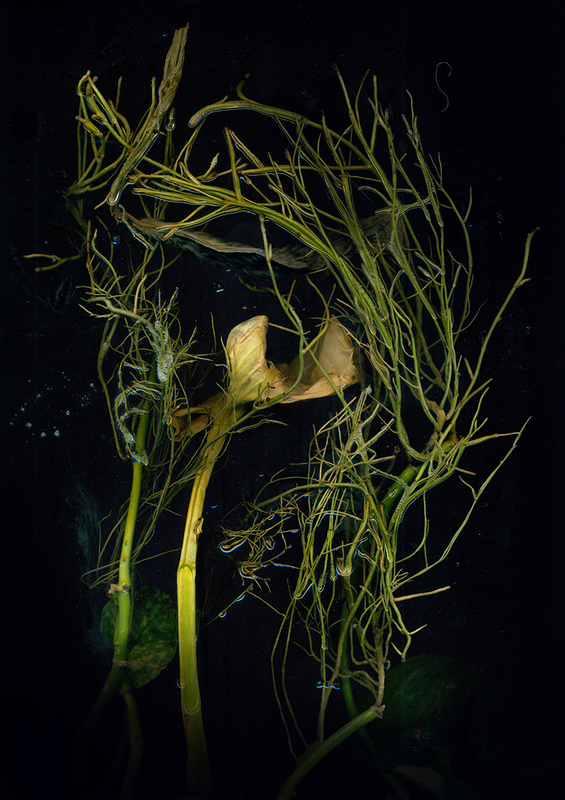
Landscape II
Humid Landscapes is a five artworks series realised in Milan during the 2020 lockdown.
Body parts and organic elements - such as plants, roots and saliva - appear contemporary in the scans. The series started as creation and exploration of secret worlds: it rapidly and irreparably became a ritual of reappropriation of the body and of the natural landscape, in a moment in which the first one was imprisoned and the second one denied. Body and organic elements established a possessive relation, passional biophilia that only exists in the intimacy of a deep water garden.
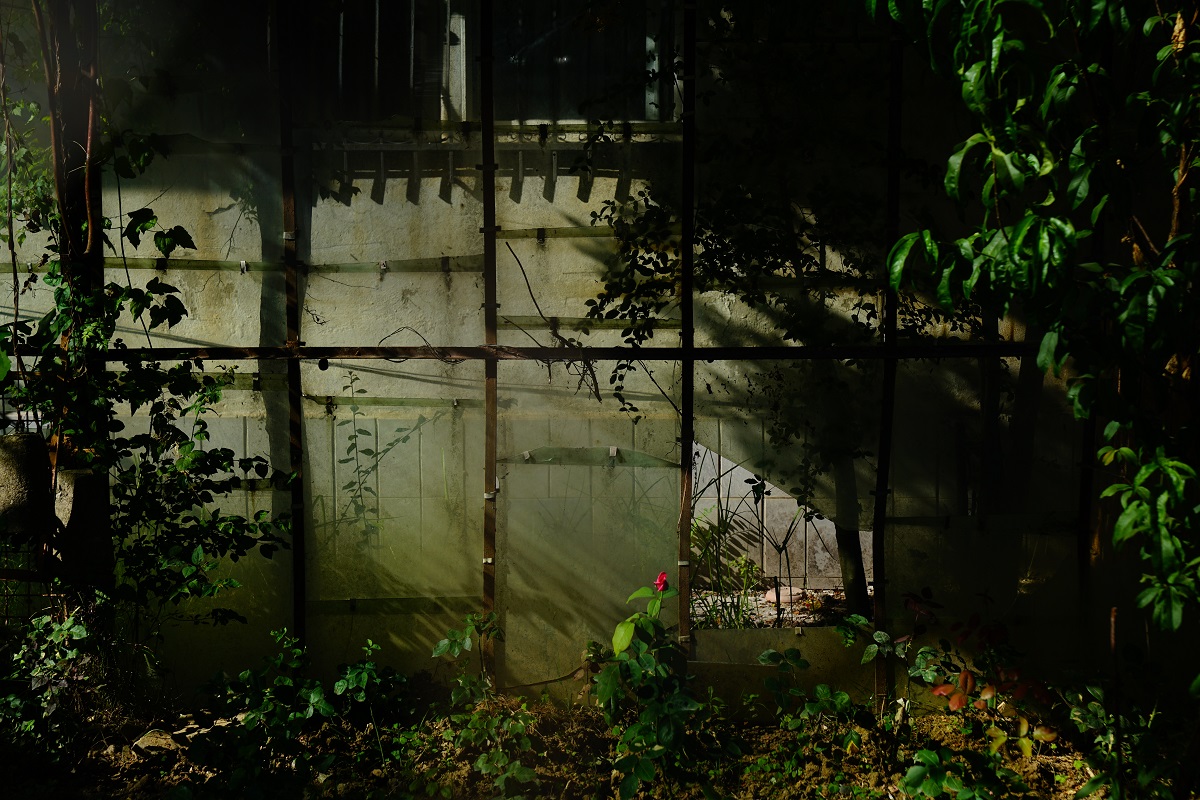 “Untitled” from the project Green House
“Untitled” from the project Green HouseTirana, 2020
[About] a Place
At hand, on the land moments, in a sequence that loosely follows the time of day and the season of the year, examining the details of life on a no-dig permaculture market garden in west Wales.
![]()
![]()
![]()
![]()




Asparagus Kale grown for seed for the Real Seed Company, Newport. This seed was originally harvested from a permaculture holding in Lancashire nearly twenty years ago. The plant produces 'spears' that look like asparagus and these are what is harvested and eaten before flowering. They are prolific and delicious, with a long season, ideal for a garden plot as only one or two plants are required.

image taken during an event held on Remembrance for Lost Species which focussed on pollinators
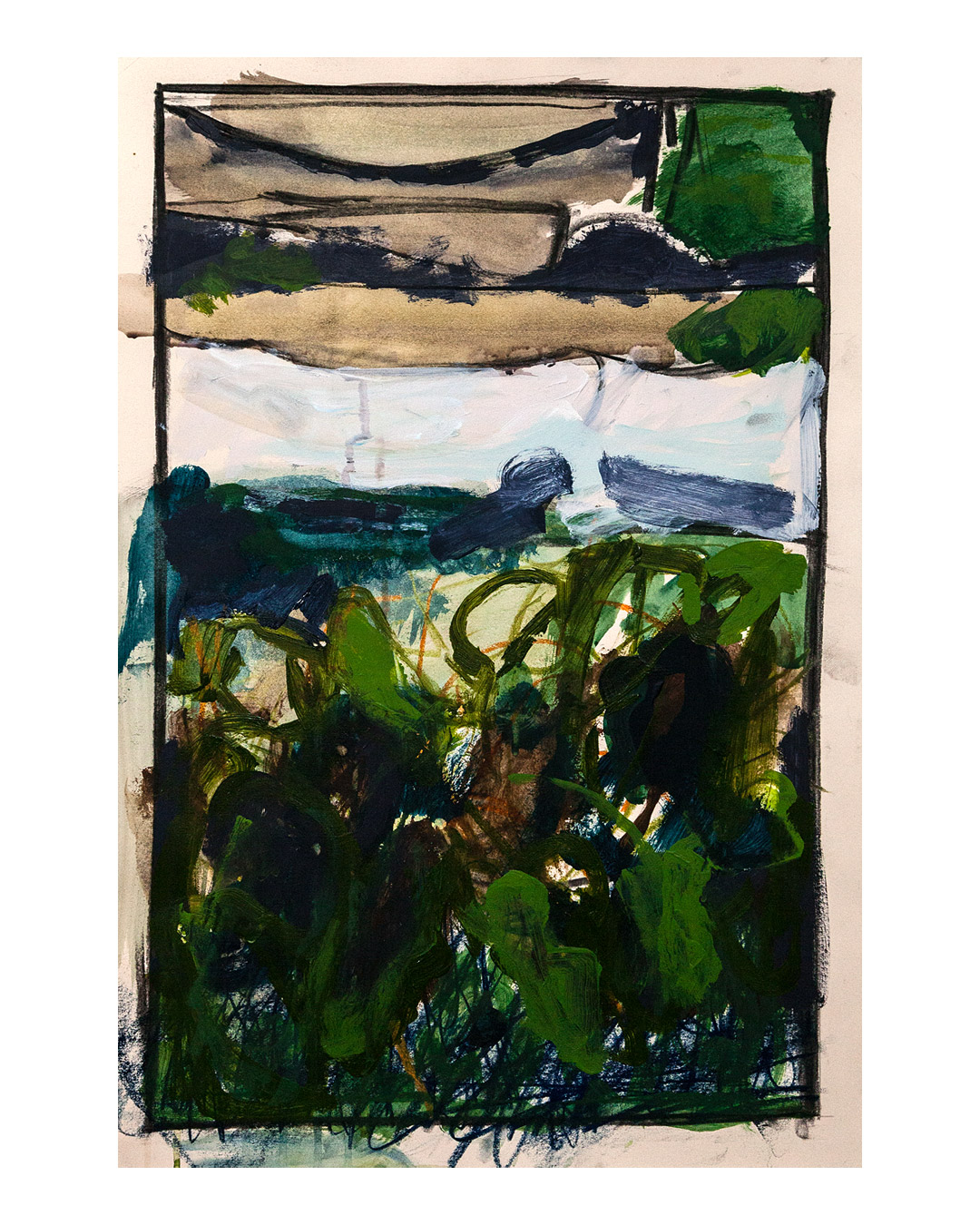

Beds and Crops
Drawings of the no-dig raised beds of vegetables at the permaculture market garden. Graphite, pencil, charcoal, collage, acrylic on paper.
Drawings of the no-dig raised beds of vegetables at the permaculture market garden. Graphite, pencil, charcoal, collage, acrylic on paper.


